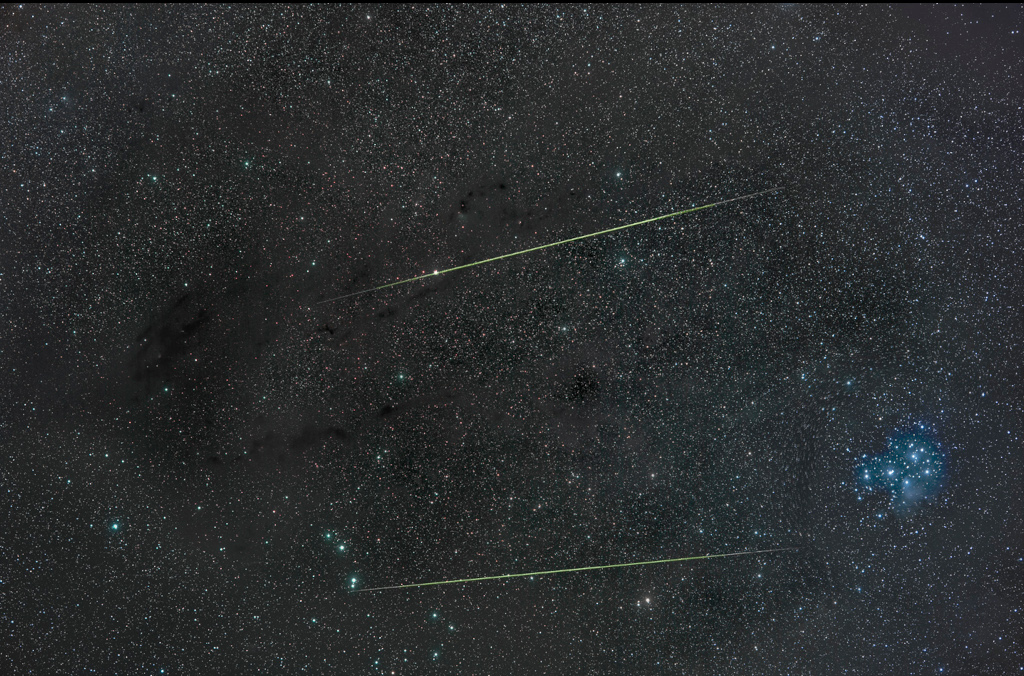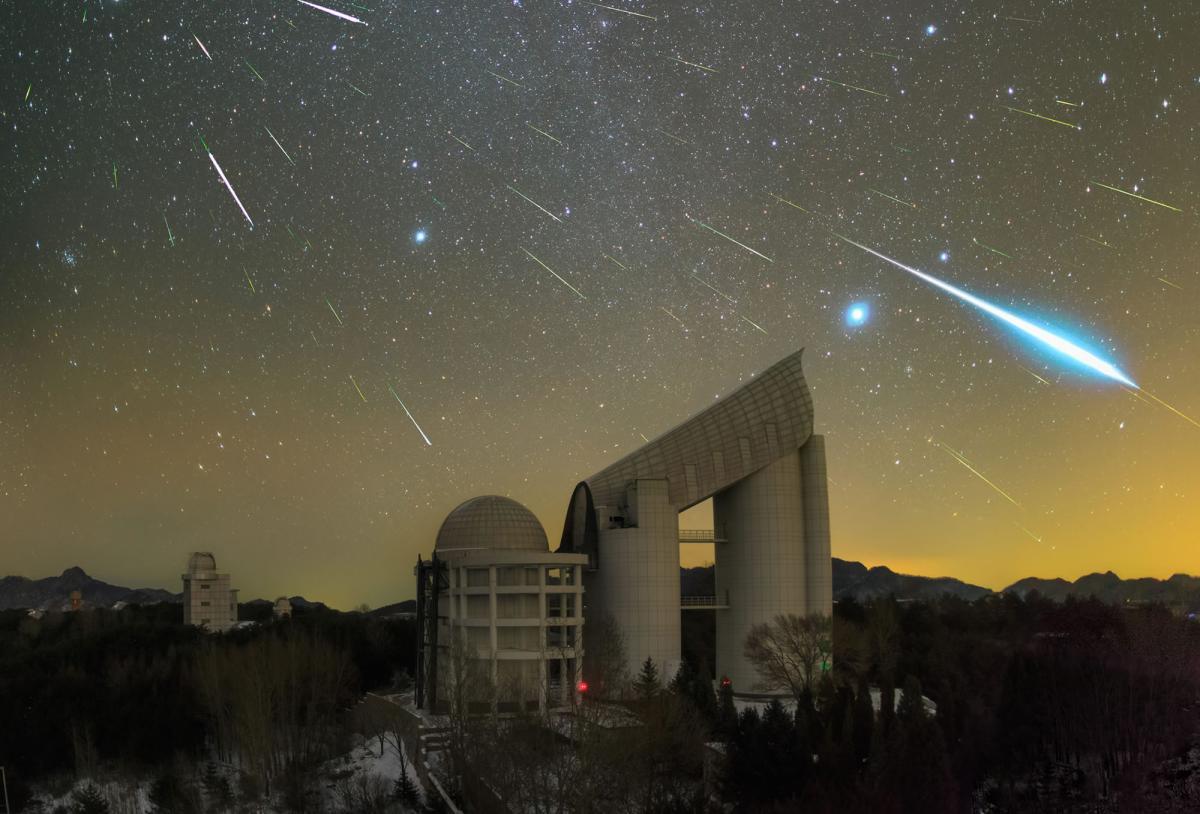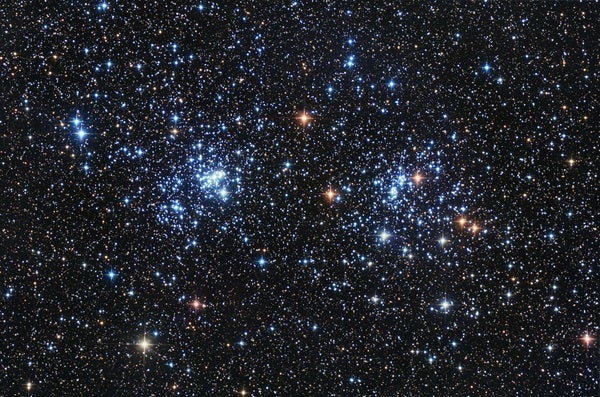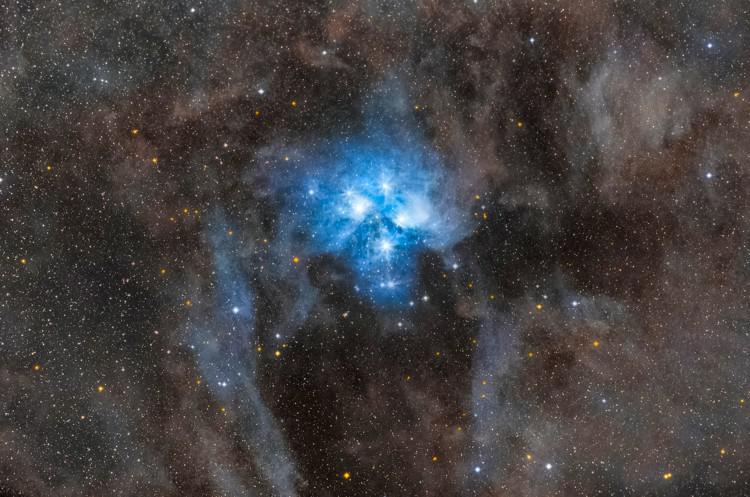I always love seeing the Pleiades next to comets or meteors, because it is so hugely interesting to compare their colors! And indeed, the Pleiades are strikingly blue in this APOD, and the meteors are strikingly yellow-greenish.
But me being me, I noticed some very greenish-looking stars in the lower left of the picture. Before I talk about them, let's look at an attempt to show the true optical colors of the 25 brightest stars in the sky (26 if we include the Sun, which we should):
The optical colors and B-V indices of the 25 brightest stars
in the night sky. Credit: Tragoolchitr Jittasaiyapan
The Sun as seen from ESA/NASA's Solar Orbiter.
I have used B-V color indices to give a "scientific" description of stellar colors.
Yes, I can hear you groaning, Chris.
The B-V index measures a star's brightness in the blue (B) channel versus the yellow-green (V) channel. The B-V index of our G2V Sun is 0.656 ± 0.005. Any star with a higher (more positive) B-V index is going to be yellower (or redder) than the Sun. Any star with a lower (less positive, or in some cases negative) B-V index is going to be bluer than the Sun.
The B-V indices of the 25 brightest stars that I have added to Tragoolchitr Jittasaiyapan's image are Johnson B-V indices. They may not agree with other measurements of these stars' B-V indices.
Matching a star's visual appearance with its B-V index is a tricky business. In Tragoolchitr Jittasaiyapan's image, you can see, for example, that Castor in the bottom row looks bluer than Adhara in the same row, even though Adhara is a lot hotter, produces a lot more blue light and has a much more negative B-V index than Castor. Then again, our eyes are typically unable to tell the difference in the saturation of blue color in (not so hot) A-type stars versus (much hotter) B- and O-type stars, although cameras can sometimes do it.
In the picture at left below you can - just barely, but you can - see that one of the blue stars (middle row, to the left) between nebulas IC 405 (right) and IC 410 is bluer than the others. And why not take a look at Tragoolchitr Jittasaiyapan's picture of the same star in the same stellar environment?
The very blue star in rwittch's and Tragoolchitr Jittasaiyapan's images is IQ Aur, and its B-V index is -0.17. The star to the right (west) of IQ Aur, 17 Aur, has a B-V index of -0.04. IQ Aur really and truly is much bluer than its "neighbor". Our eyes can't tell the difference, but a good photograph might.
(And yeah... the color balance in rwittich's image, particularly when it comes to the color of the stars, is not the same as the color balance in Tragoolchitr Jittasaiyapan's image. That's the way it is in the world of astrophotography.)
I'm sure you know that stars don't look green. They just don't. And no stars look green or even cyan in either Tragoolchitr Jittasaiyapan's or in rwittch's images.
Which brings us to today's APOD:
As I said, I find the colors of the stars at lower left in David Cortner's image remarkably cyan-looking or even greenish. In my attachment I have identified some of the stars and added their B-V indices. There is no (good) reason for these stars to look greenish.
But there may be one reason after all. The meteors themselves are greenish. Perhaps the person processing the image decided to somewhat enhance the green color of the meteors (in fact, they look yellow-green in the APOD). As a consequence, the stars may have acquired a greenish tint, too. But the Pleiades look blue, no matter what. Good old Pleiades!

Anyway, if we talk about the color of stars, we surely should look at the color of some meteors, too!
As you can see, the brightest meteor explodes in brilliant bluish-cyan light. But many of the fainter meteors do look greenish, just like they do in today's APOD. Those that are "medium bright" look faintly pink. (Dilute Barbie, perhaps?).
So Chris, what elements or chemical components cause the green, pink and blue-white colors in meteors?
Ann
P.S. This is my post number 13031. I like the number.
 Orionids in Taurus
Orionids in Taurus











